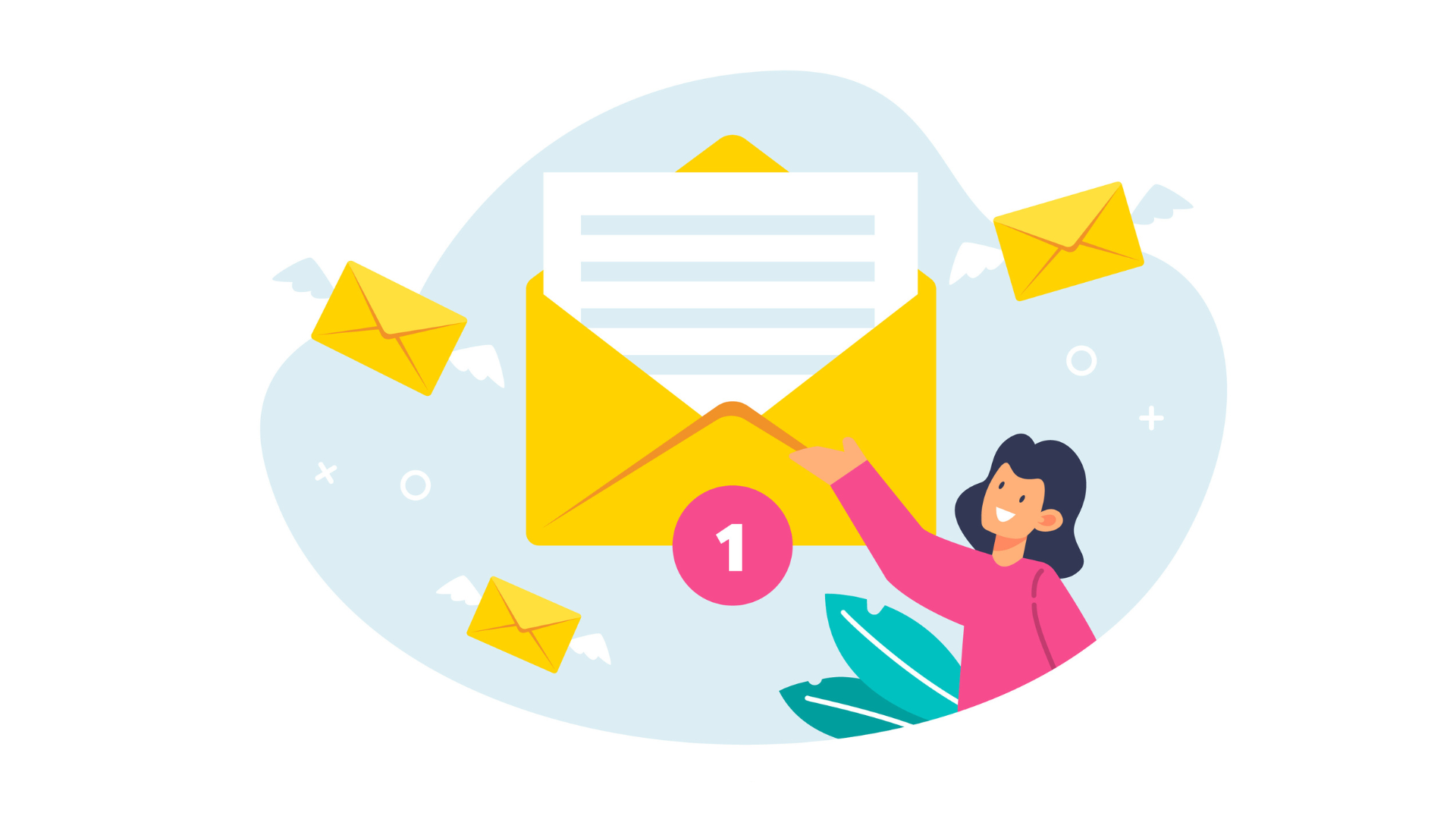
Ah, email.
Isn’t email supposed to be so last year? We’re all about social media marketing nowadays, right? Well, no. Email remains relevant today—specifically, email marketing.
A study by McKinsey reveals that B2B companies are 40x more likely to acquire new customers through email than social media because cold emails expand the business horizon leading to worldwide reach. People go to social media for entertainment but consider email a more professional platform to conduct business, making emails a continuous, surefire way to turn leads into paying customers.
But cold emailing isn’t just sending thousands of emails to as many people as possible (that’s spam). So we’re here to guide you into B2B cold emailing. Read on!
What Is Cold Email?
A cold email is an email you send to someone you haven’t had any previous contact with to make a sale, offer a partnership, or ask for business opportunities.
Such emails aim to build relationships with the recipient (your future customer), catching and nurturing them toward the end of your sales funnel.
Generally, you can send two types of emails: sales emails (a.k.a., cold emails) and marketing emails. Here’s how they differentiate, where we’ll focus on sales or cold emails for this guide:
Comparison between sales emails and marketing emails.
Both types of email marketing messages are key to building and maintaining your sales funnel. Still, you can’t have marketing emails without cold email prospecting—you have to nurture leads before handing them off to your sales team. So focus on sales emails before getting too excited with email marketing.
With cold emails, the goal is to do the following:
Cold Email Sequence → Get Attention → Show Their Need → Build Trust → Call to Action
And this is a sample cold email for you to see the flow in action:
A sample cold email written by someone looking for a business opportunity.
Cold emails typically come from sales reps who are trying to reach out to companies for a product demo or to connect for building a network.
Marketers and sales professionals from both B2B and B2C sectors, including advertising, the IT sector, SaaS companies, and transportation services, can leverage cold emailing. From B2B companies like Hubspot, Slack, and Oracle, to B2C brands like Nike and Starbucks—all companies in all industries can use cold emailing to approach leads.
What’s The Importance of Cold Emailing?
There are many reasons why B2B and B2C companies use cold emailing. Apart from the fact that email marketing results deliver a high ROI of $40 per $1 spent, the strategy also has 3x more conversion rates than social media marketing. Plus, email automation tools can quickly help launch campaigns at scale.
Here are four more reasons why cold emailing is good for business:
1. Lead Generation
Generating leads is not easy, with over half (61%) of marketers considering lead generation their biggest challenge. But cold emailing can help with that.
You start your relationship with one email to introduce your product and service and explain your benefits and how it’s useful for the cold prospect. And then, you send follow-up emails to slowly move your prospects toward converting into valuable customers.
To ensure you’re only getting high-quality leads from your campaign, your cold email needs to stand out in your potential customer’s crowded inbox. And you can do that by knowing who your audience is and only sending them relevant cold emails with a clear objective and valuable content.
Further reading: Here are the best email templates for lead generation in 2023.
2. Recruitment
As they always say… A company is only as good as its employees.
If you’re planning to grow your company quickly, actively seeking promising candidates for various roles in your company is a must. Recruiters typically find that passive candidates—those who aren’t currently looking for a job—are the best candidates. In this case, cold emails are perfect because they allow your recruitment officers to approach multiple passive candidates non-intrusively.
3. Networking
Sales professionals know the importance of networking. And while meeting professionals face-to-face every day is impossible, cold email breaks the barrier.
With cold emailing, B2B businesses can connect and reach out to professionals, including C-Suite Executives and Fortune 500 companies. For example, you can use cold email to provide a customer or lead with a short introduction about yourself and your company like you would if you met them in person. And if you spark your recipient’s interest, they might connect with you and help expand your network.
4. Brand Awareness
Cold emails help you build brand awareness, targeting prospects who have never interacted with your brand before to cover a wider market. The more you increase brand awareness to people who otherwise wouldn’t know that your company exists, the more you’ll fill up the top of your sales funnel with leads who see value in your products or services.
Further reading: Here’s a more detailed list of how to boost organic traffic with cold emails.
Isn’t Cold Email the Same as SPAM?
Despite the many benefits cold emailing offers, its relation to spam emails remains a taboo subject in today’s marketing space. One reason for this is that most business owners and marketers believe sending cold emails is illegal.
The truth is cold emails are completely and utterly legal. Unlike spam emails, which are mostly phishing and scams, cold emails are about sending valuable content to your recipients. Understand the differences to ensure that you don’t get labeled as a spammer—a slippery slope that’ll lead to poorer delivery rates.
Further reading: Our article that discusses the legality of cold outreach details more differences.
How to Write a Cold Email
How you write your cold emails determines your email outreach campaign’s success. It also determines whether your email will deliver to your recipient’s primary inbox or spam folder.
Here are the basics of cold emailing that you should keep in mind when drafting your message:
1. Subject Lines Are Crucial
Your subject lines are as important, if not more, as your email body content. That’s because it is the deciding factor whether your prospect will open your email or not. Remember, you’re talking to someone who doesn’t know about you or your company, so you have to intrigue them from the get-go.
The subject line should build curiosity among your audience while clearly conveying what your email is about. But it should never be a clickbait subject line because 69% of email recipients report cold emails as spam after reading the subject line.
Further reading: Learn how to write winner cold email subject lines on our blog.
2. Keep Your Message Short
Decision-makers in the B2B space are often busy and don’t have the time to read a novel in their email inboxes. Plus, B2C prospects get annoyed by emails that aren’t relevant to their interests (generally no one looks to their inbox for a nice musty page-turner).
It’s best to keep your email body content short, ideally between 50 and 125 words. That’s because emails of this length receive a response rate above 50%. Be short and direct, and bring a ton of value to your reader.
Further reading: Here are our seven fail-proof cold email templates to draft your cold message.
3. Highlight The Pain Point
Identify your recipient’s pain point that your product or service can help solve. Doing so shows that you’ve researched your recipient and are genuinely interested in improving their operations to achieve their business goals or improve their private life in some way.
Here are a few ways to identify your prospect’s pain points:
- Reading the company’s press releases and news coverage
- Checking company updates on social media (Twitter, LinkedIn, Facebook, etc.)
- Speaking to people familiar with the company
Take the opportunity to help your prospect visualize how much better their company operations would be if it weren’t for that specific pain point. Then, show them how your product or service is the right solution to help them address that issue.
4. Specify Your Offer
It’s essential to spell out what your value proposition is. After all, it’s the whole reason why you’ve written a cold email in the first place. Still, don’t ramble on about how amazing your company is—Everyone’s selfish. Keep the email all about the recipient by answering the question, What’s in it for them?
After introducing your company and explaining an issue your prospect might be struggling with, describe what you can do for them via your value proposition. Specify how you or your product or service can add value to their business operations or life, so they realize that reading your cold email was worth their time.
5. Have a Clear CTA
Don’t make the grave mistake of not including a call-to-action (CTA) in your emails. That will only result in wasted time and opportunity, especially when your reader decides to do business with you. The whole point of buttering recipients up is to encourage them to take a specific action, which the CTA does.
Your CTA highlights the next step you want your prospect to take if they’re interested in your value proposition. It can either be:
- Scheduling a call
- Signing up for a free trial
- Visiting your website
- Downloading a white paper
The goal is to make it clear and easy for your qualified leads to keep the conversation going. After reading your email, they shouldn’t have to think about what to do next.
Further reading: Here’s a list of essential questions to ask yourself before sending a cold email. Think of the list as your checklist to ensure that an email’s good before sending it out.
Begin Cold Emailing Successfully
Cold emailing remains a relevant tool that needs to be a part of your marketing arsenal. While crafting a cold email can be complex and time-consuming, following the guidelines we’ve laid out above makes it a million times easier for you to master this marketing method.
Still, we understand that not all B2B or B2C marketers have the time to learn and perfect their cold email skills—especially when you’re deciding to launch a campaign soon. Don’t worry—with experts like ScaleUpSales, you no longer have to invest time and money learning cold emailing.
We have the skills and expertise to do all the heavy lifting for you, allowing you to allocate your time and resources to improving more essential things in your business operations.
Take advantage of the benefits of cold emailing with ScaleUpSales. Contact us today, and let us handle the grunt work for you!




